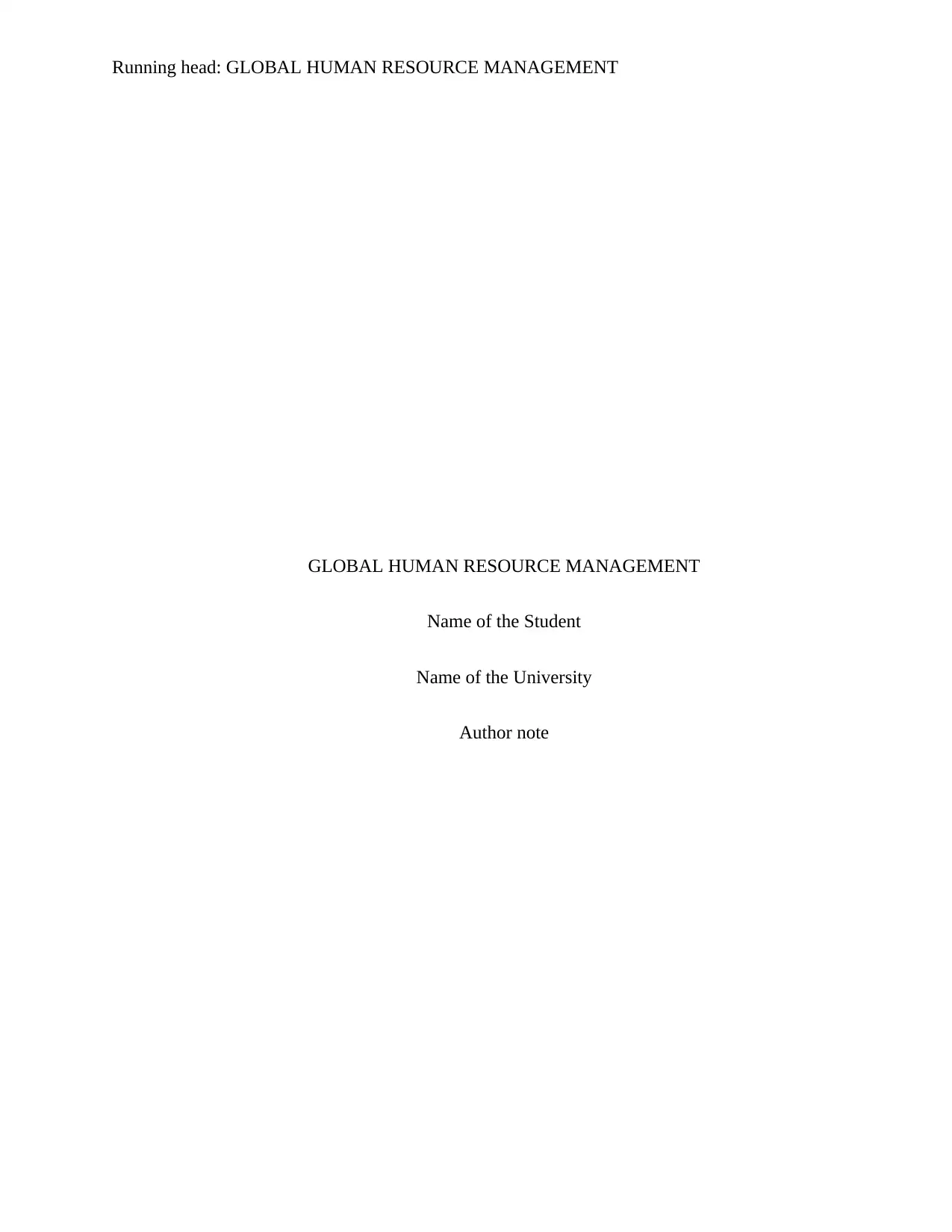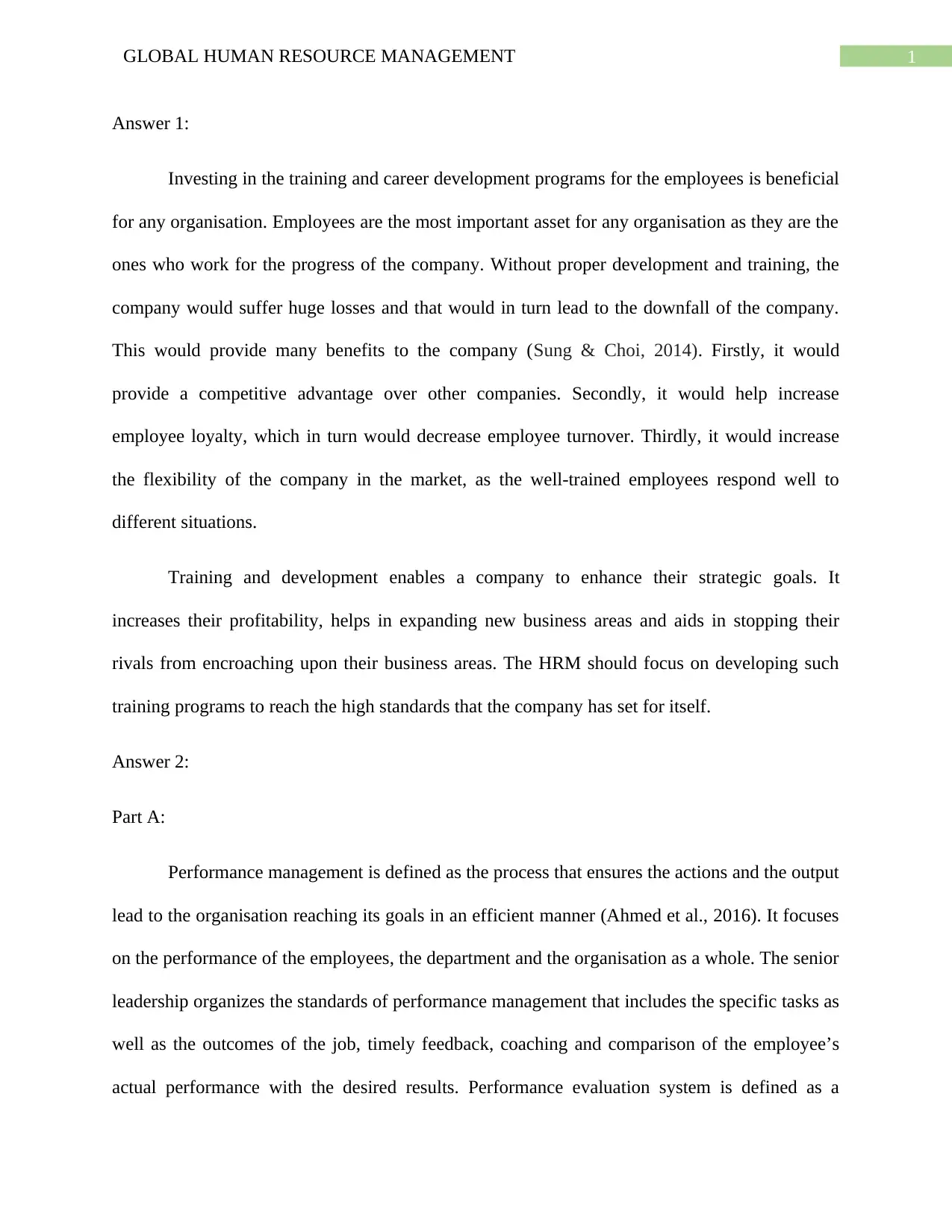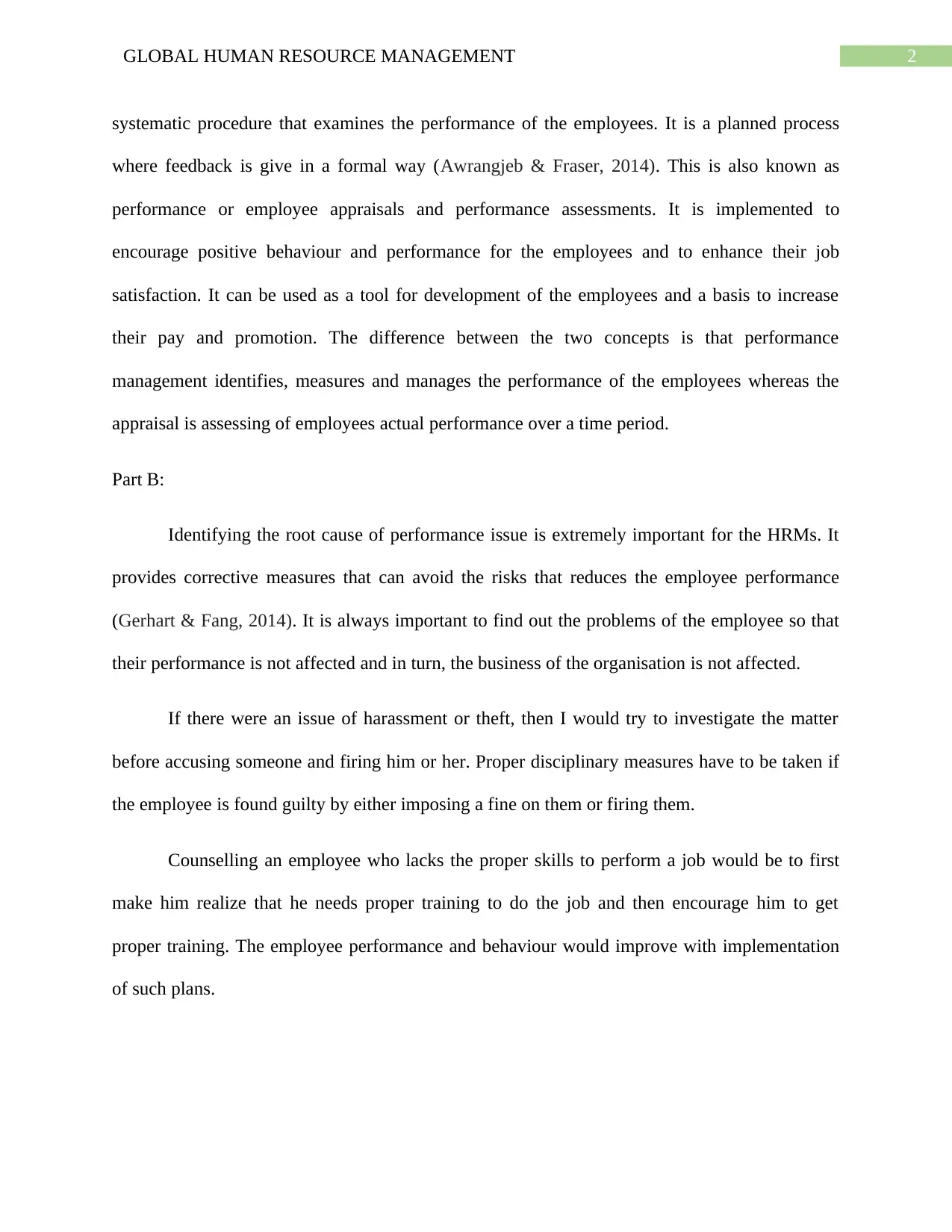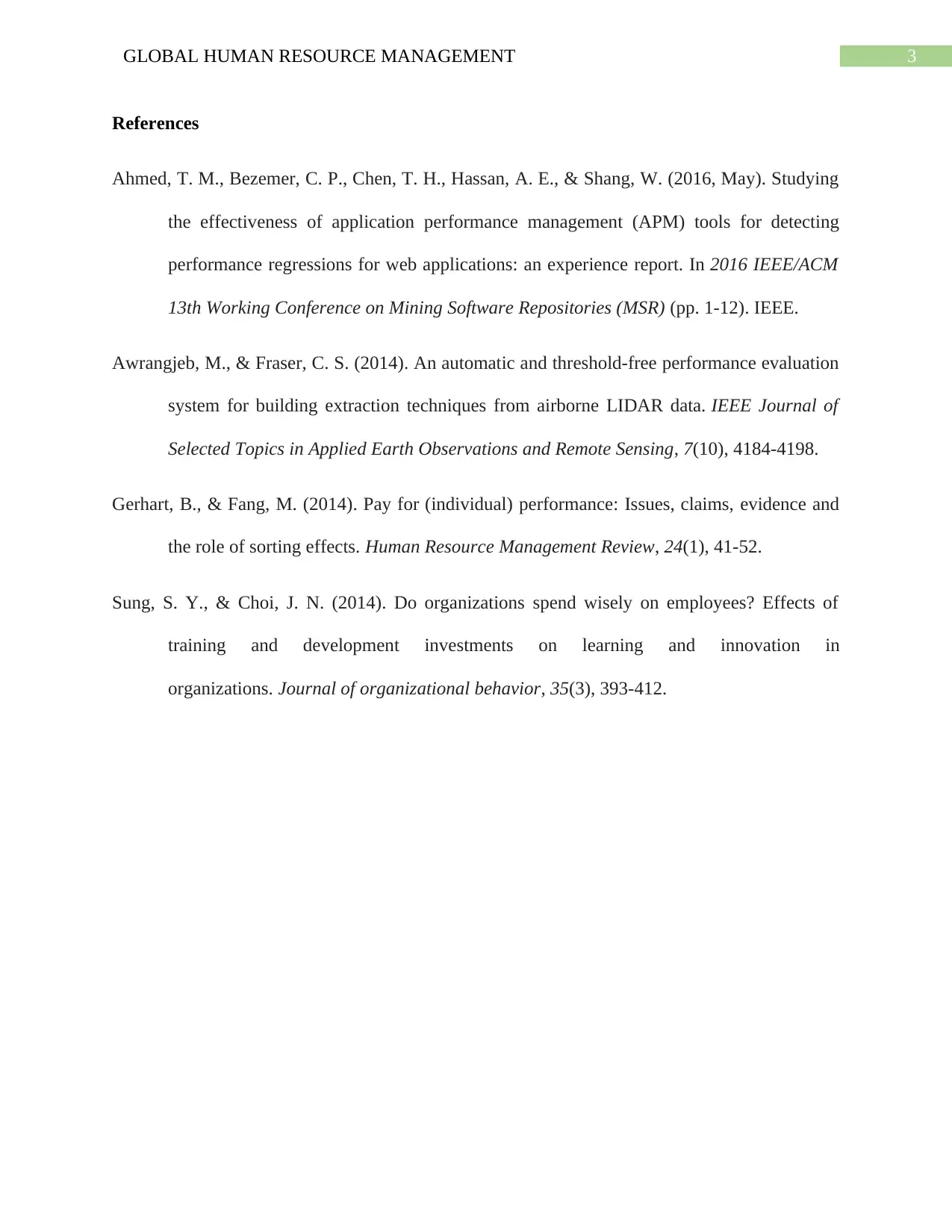HRM 300 Assignment: Strategic HRM, Training, and Performance
VerifiedAdded on 2022/08/11
|4
|835
|24
Homework Assignment
AI Summary
This assignment solution addresses key aspects of Global Human Resource Management, focusing on training, career development, and performance management. The first part explores the strategic purpose of training and career development, explaining why organizations invest in these programs and how they benefit, including increased competitive advantage, employee loyalty, and flexibility. It also examines how training supports an organization's strategic goals. The second part defines and differentiates between performance management and performance evaluation systems. Performance management is defined as a process ensuring actions and outputs achieve organizational goals, while performance evaluation is a systematic procedure to examine employee performance. The solution also discusses the importance of identifying the root causes of performance issues, providing examples of how to handle employee issues such as harassment, theft, and skill gaps. References to supporting literature are included.
1 out of 4










![[object Object]](/_next/static/media/star-bottom.7253800d.svg)